LEGACY BLOG POST: Please note this data is from our original generation of wheels. Many things have been changed and updated.
We spent an awesome day testing at the A2 Wind Tunnel last week. We spent more time testing than ever before and we are excited to share the results with you. Here’s a breakdown of what we tested.
- FLO 30 with four different tires from 0-25 degrees of yaw in 2.5 degree increments.
- FLO 60, 90, and DISC with the fastest tire found on the FLO 30 from 0-25 degrees of yaw in 2.5 degree increments.
In 2016 we conducted a large tire study combining aerodynamics and rolling resistance. Check out Part 1 and Part 2 our tire study to learn more.
Before we get to the good stuff, I think it is important to discuss wind tunnel testing in general and our specific testing protocol.
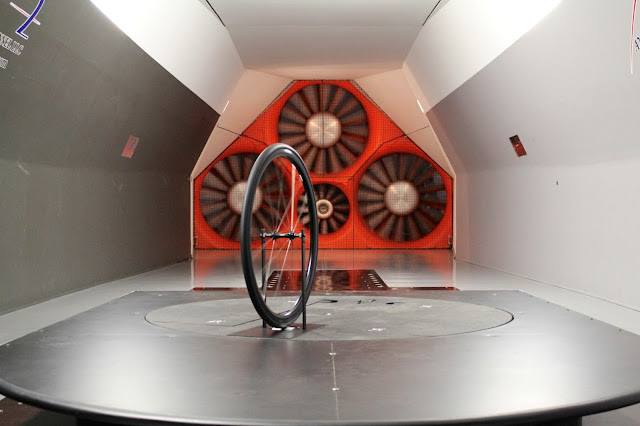
Wind Tunnel Testing and our Cycling Wheel Protocol
Understanding the aerodynamic properties of a shape is about performing as many tests as possible. Each test is like taking a picture. The more pictures you have, the clearer the overall picture becomes. At FLO Cycling, we always start the design process of our wheels using CFD. It allows us to gain a really good understanding of how a shape will perform in the real world at a fraction of the cost. However, there are limitations. For example, modeling the tread pattern and shape of a tire at 100psi is incredibly difficult. While CFD points us in the right direction, the wind tunnel tells us everything.
When we tested the FLO 60, 90, and DISC two years ago we were a cash-strapped start up. At $490 an hour, we were only able to spend enough time in the wind tunnel to test two tires from 0-25 degrees of yaw in five degree increments. Now that we aren’t quite as cash-strapped, we wanted to get a better understanding of how our wheels performed aerodynamically by performing more detailed wind tunnel tests. To accomplish this, we decided to test the FLO 30 using four tires with twice the number of data points. Additionally, we wanted to retest the FLO 60, 90, and DISC with the fastest tire found during the FLO 30 testing. This would give us a much better picture of how the wheels performed aerodynamically.
As a side note, the A2 Wind Tunnel has made big improvements to an already great facility, which allowed us to perform more tests in a shorter period of time. Thanks to Dave at A2 for all of his hard work.
To be clear about how we tested, here is what we did.
- The wind tunnel was set to simulate a relative velocity of 30mph (industry standard) and the data was normalized to account for barometric pressure conditions at different times of the year.
- We took two runs (measurements) at each angle.
- We tested the uprights that hold the wheels by themselves to determine the drag produced. This is known as tare and we subtracted this value from the overall drag value seen at each angle by the wheel. This is an industry standard.
- The measurements from each run were averaged and the averaged value was the value used in our final representation.
The FLO 30 Results
We are absolutely thrilled with the results of the FLO 30. Our goal was to drop below 100 grams of drag with the wheel at one yaw angle and we ended up getting as low as 69.50 grams of drag. Even better, six of 11 yaw angles ended up being under 100 grams of drag!
The four tires we tested were the Continental GP 4000 S, Bontrager R4 Aero, Michelin Pro 4 Service Course and the Vittoria Open Triathlon Evo. The results for each tire/FLO 30 combo can be seen below. You will see the Body Axis Drag for runs one and two, and the tare values for runs one and two as well. The last three columns show the averages of each run and the overall drag values with the tare removed. If you are puzzled by what’s going on with the numbers please take a look at our cycling wheel aerodynamics tutorial in the second half of our blog post here.

For those of you that like a graphical representation here is the Drag vs. Yaw graph. In my opinion this says it all.

The clear winner was the Continental GP 4000 S. It’s a great tire aerodynamically and makes a really big difference when compared to the Michelin Pro 4 and the Vittoria Open Triathlon Evo. The Bontrager R4 Aero was close but overall the Conti is a better tire.
Tire and Rim Interaction
The more we study aerodynamics, the more we realize the importance of tire choice. As you can see above, two different tires can create nearly a 100 gram difference in drag. The tire rim interface is very important and many tire manufacturers are working on creating the smoothest transitions possible. A great example of this is the Mavic Yksion CXR tire. It features a “CX01 Blade” that fills the void between the tire and the brake track. Additionally, the tread pattern of the tire seems to play a part in the overall aerodynamics.
When designing the FLO 60, 90, and DISC carbon wheels, we spent a lot of time trying to keep the tire/rim transition as smooth as possible. We did this by widening the brake tracks to match the width of a standard 23 x 700C tire. This approach works very well but there is still a small flat section between the round tire and the round toroidal fairing. When designing the FLO 30 we took our design one step further. On top of widening the brake track, we also gave it a slight angle. The angled brake tracks create a smooth transition from rim to tire and to allow the body of the wheel to have a wider maximum width. The pictures below show the smooth transition from rim to tire.
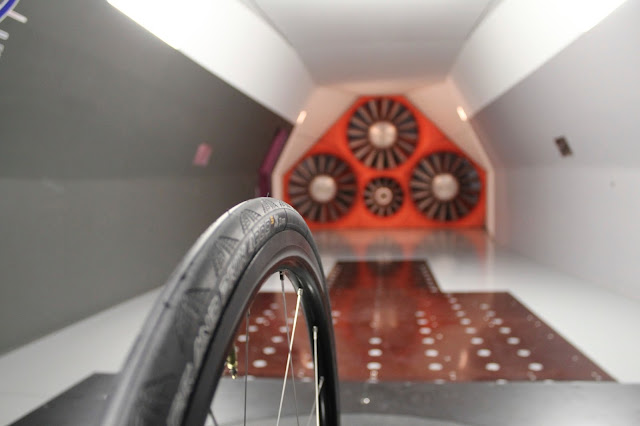
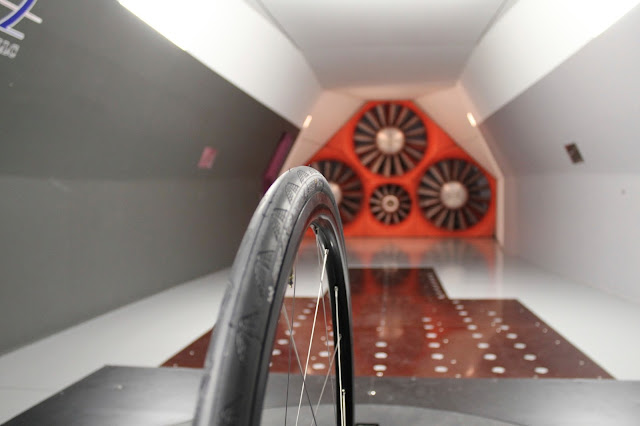
How The Results Affect You
The more aerodynamic our products become, the faster you go. In order to determine how much faster you are, we compare the drag from a standard 32 spoke wheel like the Mavic Open Pro to our FLO wheels. Every wheel has a fastest point. It may be at 12.5 degrees of yaw. Some companies calculate their time savings based on that single fastest point. In the real world, however, you can’t ask the wind to always blow at the optimal angle. In order to best represent the actual amount of time you will save using FLO wheels, we have come up with a formula that calculates the average time savings you will experience. We call this average value the Net Drag Reduction Value. The Net Drag Reduction Value will give you an accurate idea of how much time you will save no matter what the wind/yaw conditions are.
How is the Net Drag Reduction Value Calculated
PLEASE NOTE NET DRAG REDUCTION VALUE WAS UPDATED IN 2016 WITH NEW ON ROAD DATA AND WE MOVED TO TOTAL POWER IN 2020.
We use the industry standard that states 80% of the time spent riding your bike you experience a yaw angle between 10 and 20 degrees. With this assumption we calculate a weighted average. Here is the equation for Net Drag Reduction Value (NDRV) in grams.
NDRV = (Delta 0 Degree Drag * 0.0333) + (Delta 2.5 Degree Drag * 0.0333) + (Delta 5 Degree Drag * 0.0333) + (Delta 7.5 Degree Drag * 0.0333) + (Delta 10 Degree Drag * 0.16) + (Delta 12.5 Degree Drag * 0.16) + (Delta 15 Degree Drag * 0.16) + (Delta 17.5 Degree Drag * 0.16) + (Delta 20 Degree Drag * 0.16) + (Delta 22.5 Degree Drag * 0.0333) + (Delta 25 Degree Drag * 0.0333)
Here are the NDRV values in grams for the tires tested. Notice that the Continental GP 4000 S is exactly twice as beneficial as the Vittoria Open Triathlon EVO.

Retesting of the FLO 60, 90, and DISC
During our original testing of the FLO 60, 90, and DISC in April of 2011, we were only able to test two tires in increments of five degrees of yaw. At the time we were also still using the prototypes from our original factory. We ended up leaving that factory because of major quality control issues. Now that we are in full production with our new factory we’ve always wanted to get a real picture of how the production model FLO 60, 90, and DISC would perform. Using the Continental GP 4000 S (the fastest tire in the FLO 30 test) we retested the FLO 60, 90, and DISC from 0-25 degrees of yaw in 2.5 degree increments. The results shocked us. Our wheels are much faster than we originally expected!
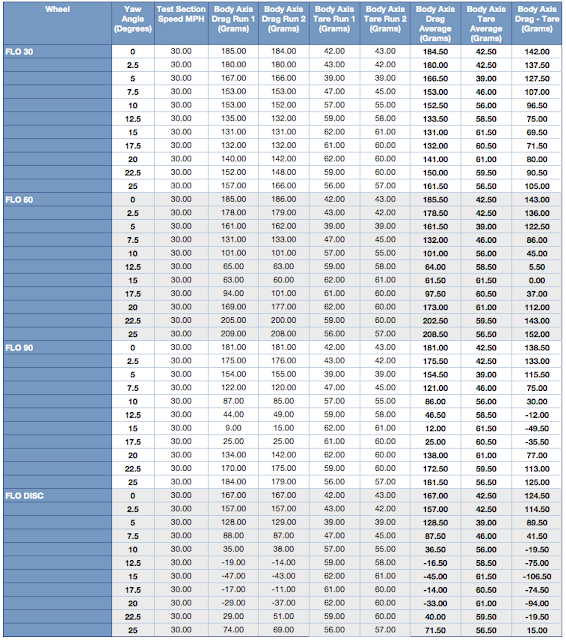
Here is the graphical representation of the data.

To show the comparison to the data collected in April of 2011 take a look at the graph below.
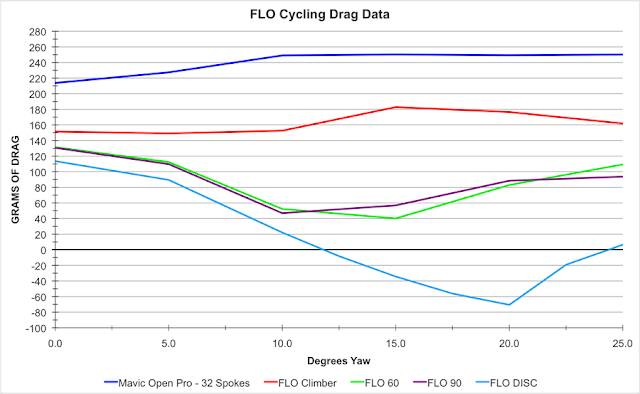
How The Results Affect You FLO 60/90/DISC
Ultimately, for those of you who already have FLO wheels, I’d recommend getting a set of Continental GP 4000 S tires. Your wheels are faster then you’ve expected. The two tables below show a comparison of the new FLO 60, 90, and DISC drag data (with continental GP 4000 S tires) to the old FLO 60, 90, and DISC drag data (with Michelin Pro 3 Race tires).


Front FLO 60 vs Front FLO 90
So you bought a front FLO 60 and you are now worried that you should have instead purchased a front FLO 90. Even though the front FLO 90 is faster than the front FLO 60, it still makes sense for most riders to use the front FLO 60. Deeper front wheels are harder to handle and coming out of the aerobars once to try and control your front FLO 90 could eliminate the additional 14 seconds saved using the wheel. We’ve always believed that a confident bike rider is a faster bike rider. If however you are a confident bike handler, the FLO 90 might just be the wheel for you!
Final Thoughts
We are really happy with the results from our time at the A2 Wind Tunnel. As a young start-up, we are doing our best to produce the fastest wheels we can. We are happy to have been able to get a better picture of the aerodynamic performance of the products we’ve created. As we grow, we will fine-tune this picture more and more as we develop the next generation of FLO wheels. We’re very grateful to be doing something we love. I’ve added a few shots of the day below. We’d love to hear your thoughts and comments below.
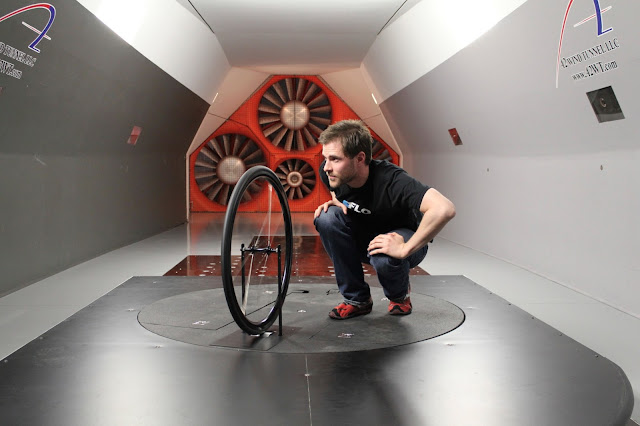
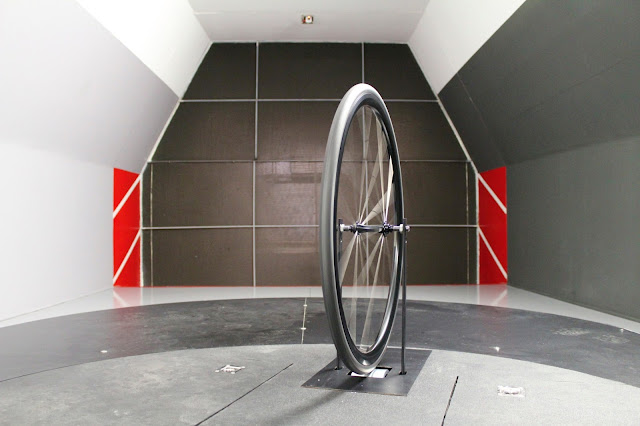
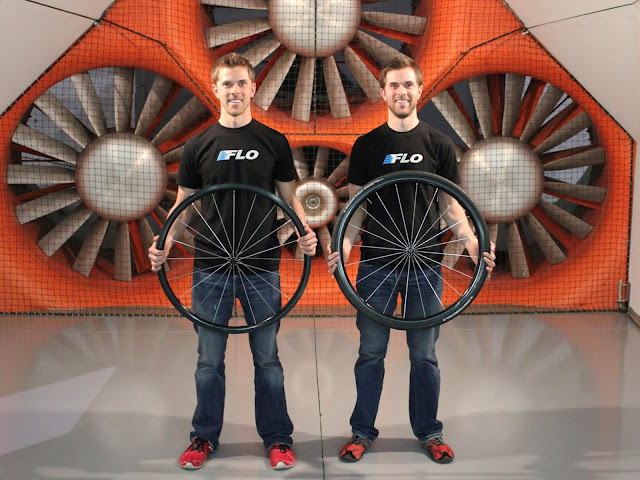

Co-founder at FLO Cycling. Jon manages the day to day operations and acts as the lead engineer for all FLO products.
